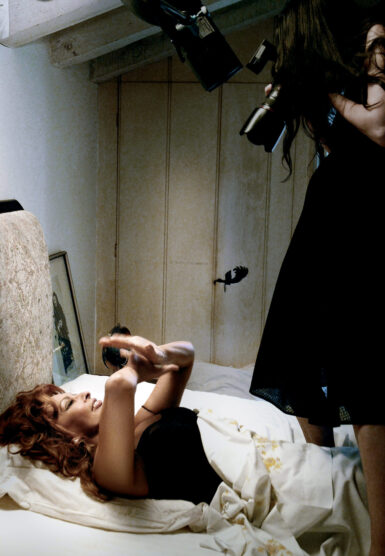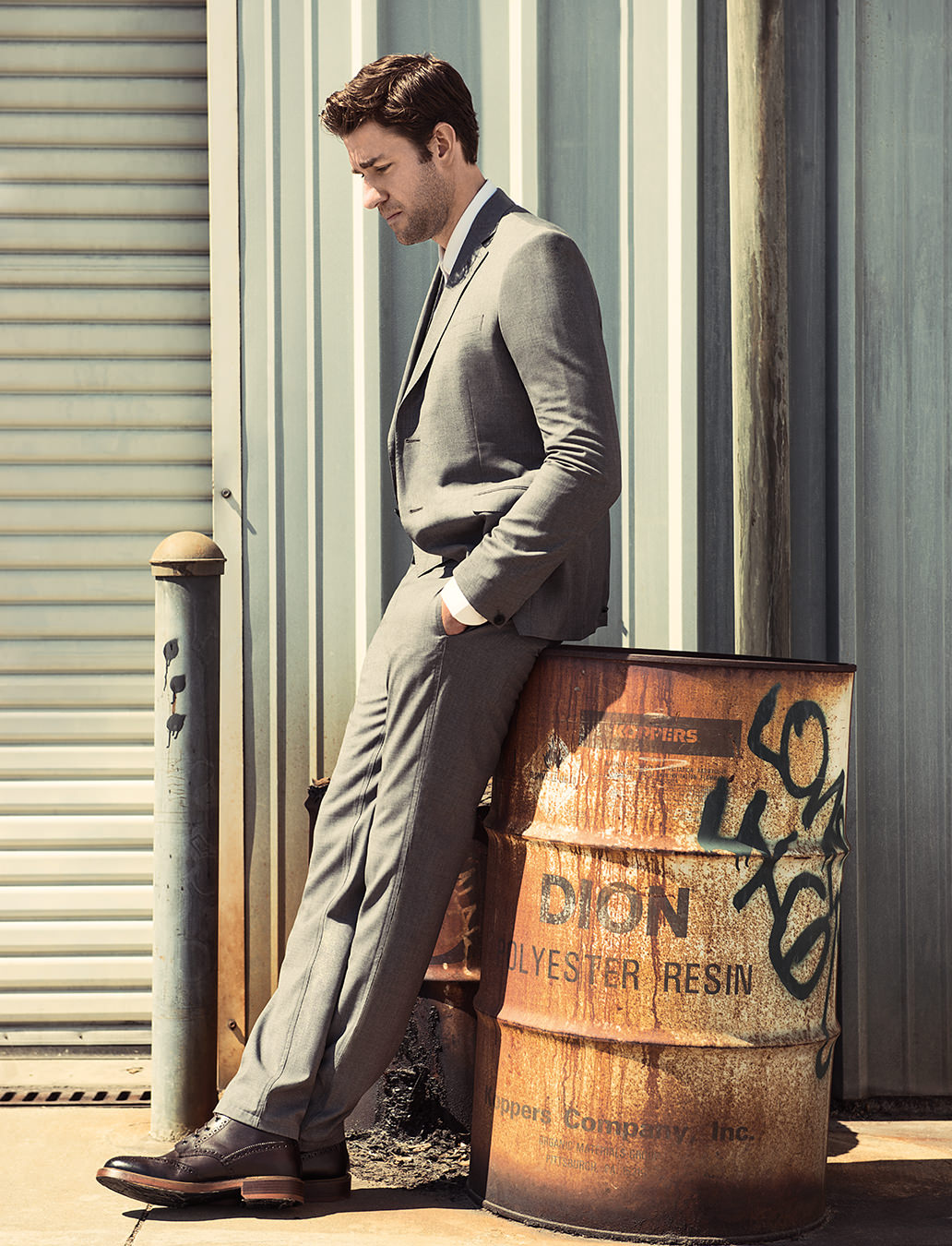Signora Sophia
The Pirelli Calendar pin-up girl.

“Pin-up means to have your picture hanging on the wall. Most likely many of my pictures have been pin-ups on walls for a long time.”— Sophia Loren
The Pirelli Calendar is a cult object sought after by enthusiasts around the world. This classy version of a pin-up calendar has become a collector’s item, iconic, due to its limited supply (40,000 are printed and only 100 make it to Canada), and also because The Cal cannot be bought. Originally launched as a corporate marketing tool, the calendar has become, four decades later, an exclusive gift for clients. Oversized and printed on luxuriously thick paper stock, it is now a fashion beacon, a photographer’s artistic statement, and it has the pull to bring in prolific beauties indeed. This year, with Sophia Loren, starring front and centre, Pirelli has a model who, quite literally, could have appeared in any one of the previous calendars, and it is difficult to imagine an equally powerful figure.
This past November, the 2007 Pirelli Calendar mega-event launch returned to where The Cal originated: the United Kingdom. Guests from around the world gathered at Battersea Evolution Park in London. Only three times in its history has The Cal launch left British soil, says Julie Naylor, Communications Manager for Pirelli U.K., “Paris for the 2006 Cal, shot by Mert and Marcus; Rio de Janeiro for the 2005 Cal, shot by Patrick Demarchilier; and Naples for the 2001 Cal, shot by Mario Testino.” Naylor has overseen the calendar’s production for 15 years and believes that the enduring success of the calendar relies on a combination of ingredients: “First and foremost, the expressive freedom we give the chosen photographers, and second, the women featured in the calendar are a broad and fascinating representation of some of the entertainment world’s most gorgeous females.”
The unveiling of the most recent calendar, A Bed and Five Stories, reveals five flawless femmes: Sophia Loren, Penélope Cruz, Hilary Swank, Naomi Watts and Lou Doillon, photographed by Dutch duo Inez van Lamsweerde and Vinoodh Matadin. This year marks a turning point for the calendar—the glamour that characterized past editions is in large part absent. Instead, there is a return to the simplicity of the film sets, stories and photography of the early 1960s, in which the personality prevails over the environment in a plain, unadorned setting. “We are in a bedroom with just a bed, sheet and headboard,” says Inez. “We wanted to make it as personal and intimate as possible, as if we were shooting pictures with friends. The idea was to have people who are very high-profile and known for paparazzi photographs and red-carpet premieres, and take them away from all that stuff.”

Inez van Lamsweerde and Vinoodh Matadin have been romantic partners as well as inseparable photographic collaborators since they met while studying at Amsterdam’s Art Academy in 1986. They have been a leading force in fashion, creating innovative editorial for magazines including V, French and Italian Vogue and W. They have also maintained a career in art, and have exhibited their work in museums and galleries internationally, including Museum Ludwig, Cologne; the Stedelijk Museum, Amsterdam; White Cube, London; the Museum of Contemporary Art, Chicago; and the Matthew Marks Gallery, New York City.
Sitting with Inez and Vinoodh at the Hilton Park Lane Hotel in London, I understand how the women they photographed felt at ease, despite being almost nude, as they posed for their calendar photos. The pair exudes tranquility and calm. Inez wears no make-up, and is in jeans; her signature waist-length jet-black hair falls naturally. Her speech is soft, yet commanding. Vinoodh is quiet and relaxed; he has a delicate boyish look and gazes intently at Inez as she speaks: “We chose five actresses that, for us, have been inspiring. Models are so used to being judged on their looks, whereas actors, that’s a different thing. It’s much more about their performance and their talent as an actor.” Why these five women? Inez is the first to respond (in fact, Vinoodh just sits, listens and smiles—he never answers): “Penélope is a warm-blooded person, thus she appears sanguine and sensual; Hilary is a pure, all-American beauty; Lou is elegant and gives us all the French cool; Naomi is sleek and sophisticated, representing British sophistication; and Sophia Loren is a whole other world, too good to be true.” Twenty-six incredibly powerful black-and-white images are the result, enough eye candy to last well beyond the 12 months of the calendar year.
Sophia Loren is the oldest woman ever to appear in the pages of the famed calendar, and at 72, this iconic beauty does not disappoint. “I was flattered,” responds Sophia, about her initial reaction to being asked to be in the Pirelli Calendar. “It was my intention since a long time ago to be depicted in the calendar; I was amused and I knew the photographers, so I was happy to do it and I had a lot of fun. I am also very photogenic,” she adds. At this stage, why pretend otherwise?
In person, Sophia is everything her image conveys, and more. She enters our meeting room, her 5’8″ frame still graced with unrivalled natural curves, leopard-print scarf wrapped with perfection around her neck, muted grey blazer, knee-length black skirt, burgundy heels and a handbag, a living symbol of glamour and sophistication. Heads turn—who can keep from looking at La Bella Sophia? No one represents pure elegance and timeless beauty better; she has naturally what many today seek through surgery. There are visible wrinkles around her eyes, her cheekbones are distinguished, her lips sultry. How does she keep looking so marvellous? “I wear Armani. It is difficult not to look good when you wear Armani,” she says. Sophia exhibits unflappable confidence, and it is hard to imagine her as a little girl desperately afraid of attention: “I was so skinny, [I had] the nickname stuzzicadenti [toothpick]. I was tall, thin, ugly … I looked strange. All eyes. No flesh on my bones.”
“It was my intention since a long time ago to be depicted in the Calendar … I was happy to do it and I had a lot of fun. I am also very photogenic.”
Born Sofia Scicolone in a Roman charity in September, 1934, she was the illegitimate daughter of Riccardo Scicolone and aspiring actress Romilda Villani. Loren grew up impoverished in wartime Pozzuoli, a town not far from Naples. Unlike many girls with screen ambitions, Sophia did not encounter any objections from her mother; rather, it was she who gave Sophia the determination to cultivate her ambitions. “My mother gave me the strength and energy I needed to be an actress—sono figlia della mia madre [I am my mother’s daughter],” she proudly exclaims.
At 14, Sophia entered a beauty competition organized by the local newspaper, Il Mattino. Even though she was dressed in an evening gown made from her grandmother’s best curtains and black shoes painted white, Sophia won and was awarded a prize consisting of a train ticket to Rome, several rolls of wallpaper, a tablecloth with matching napkins, and a small amount of lire. It was this train ticket that took Sophia to Rome to appear in her first film, Quo Vadis.
Credit for discovering Sophia and launching her to stardom is attributed to Carlo Ponti, a married film producer who eventually became her husband. As there was no possibility of divorce in Italy, Carlo arranged a Mexican divorce and a marriage by proxy in 1957. The Church hierarchy in Italy denied all validity to the proceedings of divorce and civil marriage, so their marriage had to be annulled in order to avoid arrest for bigamy. Sophia was being “threatened with excommunication … and for what reason? I had fallen in love with a man whose own marriage had ended long before.” Eventually, Sofia Scicolone changed her name to Sophia Loren (the Italian “f” in her name substituted with a more cosmopolitan “ph”) and nine years later, the couple became French citizens and were legally married.

During the 60s, Sophia worked continuously. Her Oscar-winning performance in Two Women was the first major Academy Award for a non-English language performance. “I am most proud of this film; it was very introspective and dramatic,” says Sophia. In preparation for the role, Sophia relived memories of her own war-torn childhood.
In the course of her career, Loren has co-starred with a long list of leading men: Marlon Brando, Cary Grant, Charlton Heston, Gregory Peck, Anthony Quinn, Peter Sellers, John Wayne and Marcello Mastroianni, to name a few. (Mastroianni was her favourite co-star, producing collaborations such as Yesterday, Today and Tomorrow; Marriage Italian-Style; The Priest’s Wife; A Special Day;and Ready to Wear). In 1991, the Academy presented Sophia with an Honorary Award “for a career rich with memorable performances that has added permanent luster to our art form”. Sophia was last seen on screen in Too Much Romance in 2004. She reminisces, “I always loved acting and I was always inspired by the great directors and actors that I have worked with.” When asked of her current projects, Sophia is quick to answer: “Family, and work on a selective basis.” I prod for hints of any specific projects, but for naught. She is poised and has made a conscious decision to disclose nothing.
Sophia struggled to become a mother; she had a long battle of miscarriages and medical examinations and was ordered to bedrest for her first pregnancy. Her prized sons are Carlo Ponti Jr. (39), Music Director and Principal Conductor of the San Bernardino Symphony Orchestra and Edoardo (34), a film director (whose feature-film debut, Between Strangers, starred Sophia). This tight-knit family recently lost their senior member, Carlo Ponti, who died in early January of pulmonary complications, at age 94.

A woman whose dark features and opulent figure have long been identified as the epitome of Mediterranean beauty, Signora Sophia has never forgotten her roots in Italy. But she is also grateful to America, the country that transformed her into an icon. In a career spanning more than 50 years, Sophia has amassed over 100 films to her credit. She continues to top the “most beautiful” polls, and her status as a cultural icon is undiminished. As well as being the well-known and celebrated Italian actress, she is someone who stands above fashion and shifts in popular taste. “It is important to always be yourself. Do not change your personality and attitude,” says Sophia, as her eyes gaze, unwavering.
From the Pirelli Calendar’s inception in 1964 (shot by Robert Freeman, who is perhaps even more famous for the Beatles album covers he shot in the 1960s), the images have been not just of beautiful women but of the beautiful women. While including a woman in her seventies in the mix may seem intrepid, this is, after all, the great Sophia Loren, who can still capture and retain anyone’s eye—on film, in a magazine, in a calendar, and most definitely in person. I saw it fitting, then, to ask Sophia what her definition of beauty is. “Beauty is part of your DNA and is Mother Nature and also is what is inside you. Beauty might also be a personal opinion, and it belongs to the domain of your culture, tradition and private feelings.” With so many beautiful women in the world, only a select few have something special that makes them rise above the rest; it’s often something magical, intangible. But Sophia has it, undeniably. The Archbishop of Genoa once said that although the Vatican opposed human cloning, “an exception might be made in the case of Sophia Loren”. About that, there is universal agreement.




